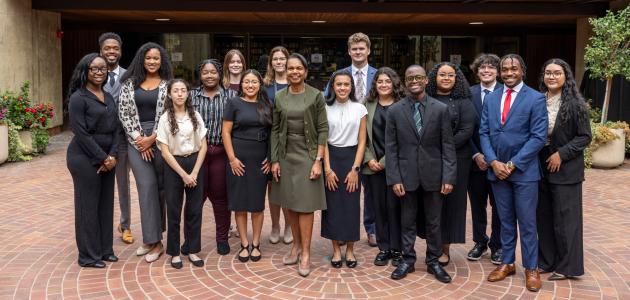In this edition of the Technology Policy Accelerator Newsletter, Simone D’Amico and coauthors explore the challenges posed by the space sustainability paradox and offer some solutions. Drew Endy and his coauthors explain why every US city and town needs its own community laboratory space. And authors of the Stanford Emerging Technology Review are advancing work on the 2026 edition of the report.
Featured Analysis

Space Safety and Sustainability, Part I: Past and Present Practices
A new Hoover Institution Press working paper by Science Fellow Simone D’Amico and coauthors Tycho Bogdanowitsch and Rebecca Wang highlights the space sustainability paradox, which highlights how expanding space activities that support Earth's safety, sustainability, and security (such as using satellites to monitor environmental changes and track missile tests) can also jeopardize sustainable access to space due to increased congestion in orbit. The authors identify gaps in policy and in the technological capabilities necessary for addressing this challenge and profile the relevant bodies, both national and international, who play a role in managing ever-growing amounts of space traffic.
The essay warns that without careful management now, continued proliferation of space traffic and generation of space debris could lead to catastrophic outcomes in which entire orbits above the earth are closed off for generations. The authors stress that both technological innovation and policy action are needed to resolve the space sustainability paradox, and that the United States must take the lead both on a national and international basis. The Working Paper will be discussed at an event being held in Hoover's Washington, DC office in October, where experts from government, academia, and industry will explore the issues it raises.
Read more here.
More Insights

Creating a Popular Foundation for the Bio-Age
In the latest edition of Issues in Science and Technology, Senior Fellow Drew Endy writes alongside Callie R. Chappell, Ana Paulina Quiroz, and David Sun Kong about the need to cultivate local or community-level access to laboratory space for work in bioengineering. They call these spaces “LABraries” and argue they should be as commonplace as your neighborhood library. They cite the example of such a lab operating in Santa Clara, California, called “BioCurious” that enabled a Stanford bioengineering team to continue their research work at the start of the COVID-19 pandemic when all official lab operations at the university abruptly shut down. They cite other examples of community labs operating in Seattle, Baltimore, Chicago, Brooklyn, and Somerville, MA.
Funding the development of LABraries in more US communities would require state support or private philanthropy at the scale of the Carnegie library construction effort in the early 1890s. But they argue the benefits of such an effort would be vast. “LABraries present a distinct vision and model: Science that is of the people, by the people, and for the people,” the authors write. “Where previously self-taught enthusiasts might have tinkered at home alone, the LABrary can be a safe and stewarded environment where budding entrepreneurs, innovators, scientists, artists, and everyone else can receive support and guidance to pursue work responsibly.”
Read more here.

SETR’s 2026 Report Nears Completion
Contributors to the Stanford Emerging Technology Review are hard at work advancing the 2026 edition of the guide for policymakers. The document will be available in late January of next year and will cover ten critical emerging technologies, including AI, biotechnology and synthetic biology, and neuroscience, as well as quantum technologies and space tech. It will also feature an expanded chapter on themes that cut across individual domains. One of the new themes that has been added highlights the critical importance of technical standards and how these can be used to accelerate the adoption of technologies and as instruments of geopolitical influence.
About the Technology Policy Accelerator
The Hoover Institution’s Technology Policy Accelerator conducts research and develops insights that help government and business leaders better understand emerging technology and its geopolitical implications so they can seize opportunities, mitigate risks, and advance American interests and values.
About the Stanford Emerging Technology Review
The Stanford Emerging Technology Review, a product of a major Stanford education initiative, is an indispensable guide to tomorrow’s world, providing in-depth explanations of pivotal tech domains, recent developments within them, and what to look out for in the future.






















